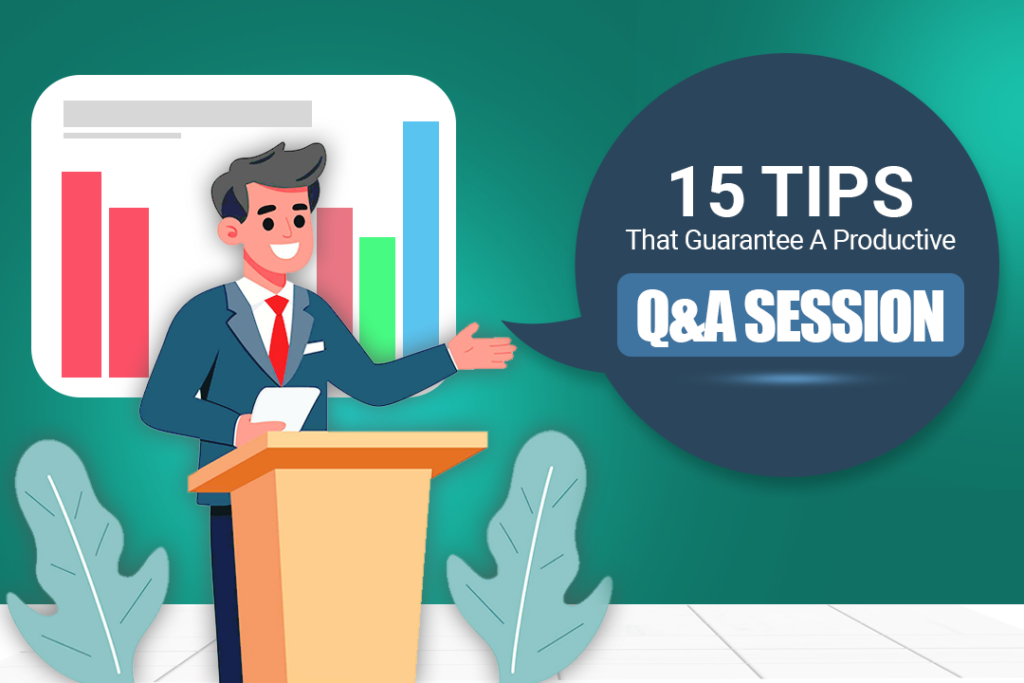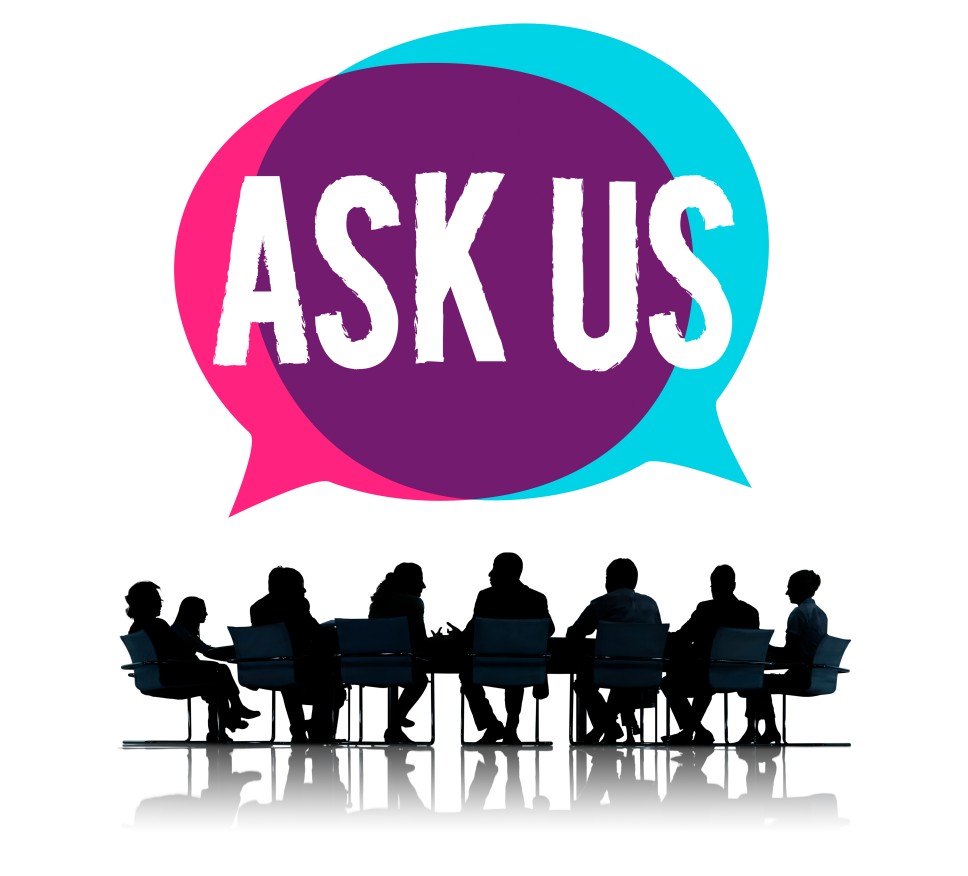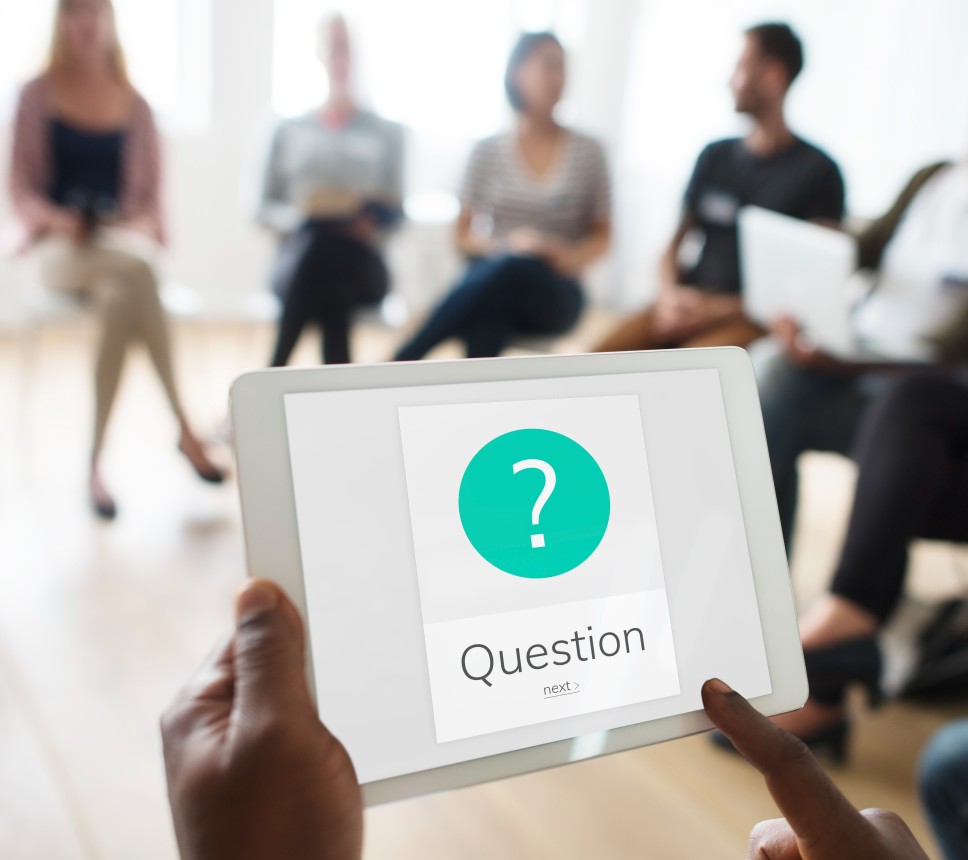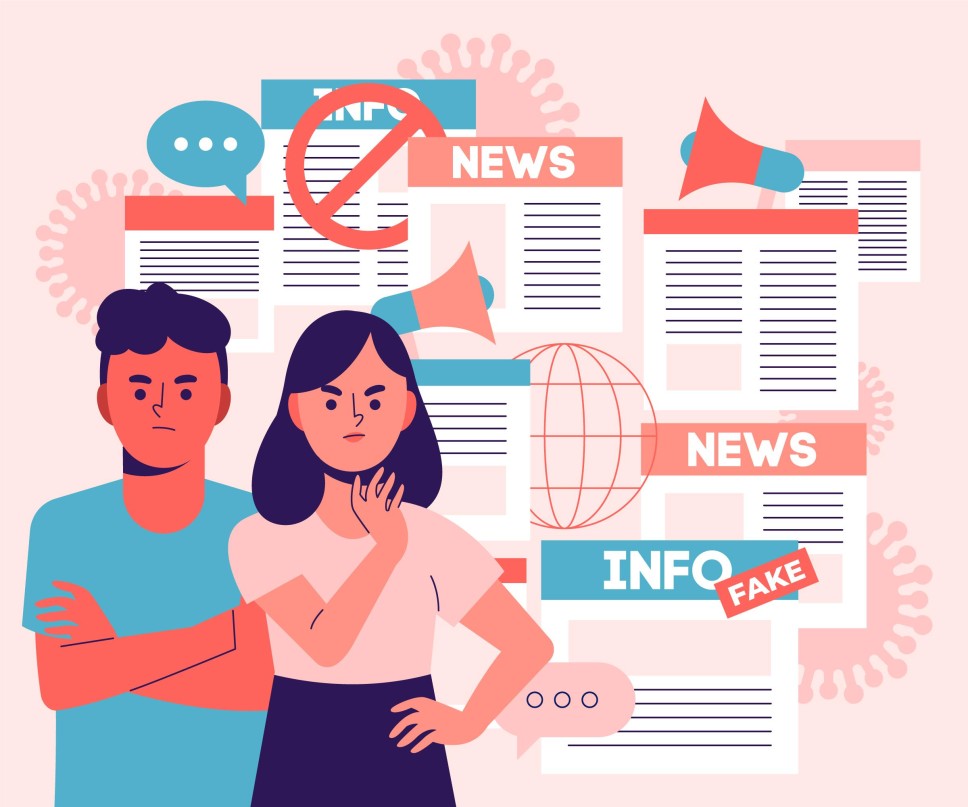
Conferences and events often include question-and-answer sessions as an integral presentation component or as standalone segments. These Q&A sessions allow audiences to delve deeper into specific subjects or pose questions to individuals they might not typically have access to.
Hosting a successful Q&A session may not always be a cakewalk. It requires the moderator or emcee to manage the time effectively, structure the session strategically, encourage active participation from the audience, and much more. Let’s delve into the tips for hosting a successful Q&A session.
What is a Q&A Session?
A “Question and Answer Session,” or “Q&A Session,” is when a presenter interacts with an audience by answering their questions. Hosting a Q&A session is very important from the point of view of engagement, as participants stay engaged through interactive conversations that keep them interested and focused.
It can also help participants understand the discussed issue as they can ask questions to understand complex subjects better. It also ensures personalized learning, as asking tailored questions makes the information more relevant to the person’s requirements.

Furthermore, it promotes problem-solving as these Q&A sessions address issues and provide immediate, useful answers. Q&A sessions help people engage with the content and learn more effectively.
15 Tips to Host a Successful Q&A Session
While we know Q&A sessions and why they are so important, let’s look at a few tips to help you conduct a successful and effective Q&A session. This section below will contain tips for each stakeholder- presenter, moderator, audience, and organizers. We hope these tips help each of you achieve your goals at the conference, enhance attendee engagement, and improve your interaction with the audience.
For the Presenter-
Here are a few pointers that a presenter should keep in mind for a successful Q and A session-
1. Define Clear Objectives
First, clearly define the objectives for a successful Q&A session. This means outlining the specific goals and expected outcomes. This clarity creates the foundation for a concentrated and deliberate relationship. Stating these goals can guide participants and shape the conversation’s direction. To do so, follow these steps:
- Choose the main goals you hope to achieve during the Q&A session. Are you hoping to exchange information, solve issues, or generate creative ideas?
- Create straightforward statements that convey each purpose. Use language that is easily understood by your intended audience.
- Before the session starts, inform the participants of the goals. This provides background and aids in establishing expectations.
- Maintain a direct connection between the objectives and the session’s central theme.
2. Structure the Session
Plan how the discussion will go and what will be discussed for a good Q&A session. This strategy helps more people participate, keeps things organized, and makes the session impactful. This is how you do it:
- Begin by outlining the session’s goal, objectives, and any participation rules.
- Establish the speaker’s credibility by briefly outlining their expertise or history.

- You can begin with quick opening comments that establish the tone for the Q&A.
- The majority of the session should be devoted to questions and answers. The speaker can discuss multiple topics while emphasizing their significance to the main theme.
- Give each question a time restriction to guarantee a detailed discussion. This will save time on certain topics.
3. Undergo Thorough Preparation
Preparing well for a Q&A session is important. It helps you gain a thorough understanding of the topic so that you can effectively tackle the questions after the presentation. For tips, check out our article on Public Speaking Techniques to Leave a Lasting Impression.
If you are a presenter and are wondering how you prepare for the presentation like a pro, we have a few techniques explained ahead for you that will help you in the process:
- Firstly, consider what your audience is interested in, what they know, and their history when responding. That will help you prepare accordingly.
- Secondly, you need to understand the topic of discussion to answer effectively and fully.
- While preparing the presentation, think about the questions the participants might ask and plan smart answers beforehand. This is crucial to establish your credibility as a moderator.
- Track new advancements in the field to stay updated with the latest information. This will help you tackle any challenging questions that may come your way.
- As you prepare your key points, find important details, examples, stories, or statistics to improve your replies. Doing so will add credibility to what you have to say. To get more interesting ideas to make your presentation successful, read our article, “17 Impactful Persuasive Techniques to Become a Master Public Speaker.”
- Also, remember to simplify complicated concepts while answering the audience, as you don’t want to lose their attention along the way.
4. Concise and Clear Responses
Speakers should always keep their responses short, clear, and focused on the problem when answering questions. Before organizing the Q and A session, you should also thoroughly research and prepare for the session’s main theme.
In an excerpt from the 2016 Japanese textbook called “NIG Method for Scientific English Presentation by Tatsumi Hirata, Todd Gorman, and Yash Hiromi’’, the authors discuss how to interpret certain questions under various circumstances. According to the journal, this practice guarantees the participants receive correct information while avoiding needless discussions or confusion. This is how you can do it:
- As soon as a question is asked before replying, take the time to comprehend the question thoroughly.
- Address the questions using facts, figures, and substance. This shows your preparation for the topic. Avoid technical jargon that may mislead people.
- Summarize key points separately if the question is open-ended and long.
- You can also use analogies to simplify some difficult topics.
- Try to avoid repeating the same material in multiple ways.
- Inquire whether the participant understood your response or if they want more clarity.
5. Enhance with Visuals
A research paper published in May 2023 in Multimedia Tools and Applications, titled “The Influence of Product Digital Visual Presentation on Purchase Willingness: effects of Roundedness Axes and Degree,” explores how different shapes and colors in a presentation affect one’s attention. These responses to stimuli make one focus more on the screen. Pictures, charts, graphs, or slides can reportedly make a Q and A session more understandable. These visuals show concepts, statistics, or ideas. Visual aids make complex content easier to understand. They add depth, clarity, and interest. This is how you do it:
- Choose graphics that directly support the presentation’s contents.
- Put clear, uncluttered graphics that are easy to understand.
- Turn statistics or data into aesthetically appealing charts or graphs.

- To show concepts, procedures, or scenarios, use visuals or diagrams.
- Avoid using too much text in your presentations, as it can make the screen look cluttered; instead, concentrate on visual depiction.
- You can use colors to emphasize and distinguish different aspects or use specific colors and shapes to highlight specific information.
- For your participants to understand everything thoroughly, explain every visual depiction from your presentation.
While we are on the topic of presentations, you should also check out The Gazebo- B2B speakers directory. If you’re a speaker or want to be one, join our Gazebo Speaker Community by filling out a small Google form. Once you’ve made your profile on this platform, you can also upload your presentations and creations with fellow community members and expand your connections.
For the moderator-
For a Q and A session to be successful, a moderator must consider these key pointers carefully-
6. Encourage Active Engagement
To get more people involved in a Q&A session, it’s important to empower them. Participants should feel encouraged to ask questions and share their views. This active engagement raises the session’s depth and richness. So as a presenter, you can adhere to a few important ways, as mentioned below-
- Begin the meeting with a kind and welcoming introduction that invites participation.
- To establish the tone for the conversation, prompt participants to ask questions.
- Start with a few icebreaker questions to establish rapport and show openness. It is extremely important to ensure that everyone feels welcome and at ease asking questions.
- Let people share their thoughts and stories about the subject by giving them the floor open for their words.

- Invite participants to ask follow-up questions to dive deeper into specific aspects.
- You should also encourage participants to answer each other’s questions and explain further to promote interaction.
7. Facilitate Effective Moderation
The moderator should ensure a balanced and productive conversation during a Q&A session by managing its flow and dynamics. A good session runs smoothly, involves people, and gives everyone value.
Here are a few steps to effectively moderate your session:
- Introduce yourself at the beginning of your session. Include your background and expertise on the topic and explain how you can moderate that session for your current audience.
- Before the session starts, explicitly announce your session’s participation criteria to your audience. This ensures courteous and helpful conversations.
- Give each question a specific time limit to keep things on track and maintain a good pace.
- Explain the session’s rules in the beginning. Make sure to inform them beforehand that you can step in as a moderator if some queries take too long. This needs to be practiced so everyone can have a turn to speak.
- Use transitional statements to move between queries.
- Maintain a neutral and respectful demeanor, especially when dealing with potentially contentious issues.
8. Focus on Relevance
As a moderator, you must ensure that the questions and their replies are related or always circle back to the session’s main theme to keep it relevant. Using this method helps everyone stay focused and get the most out of the session.
Follow the instructions below to make the most out of your session:
- Encourage participants to ask any queries that they have about the main topic of discussion.
- If a question deviates from the major issue, gently steer it back to the right topic.

- As a moderator, if you are dealing with a large volume of questions, prioritize the ones that are closely related to the subject.
- Allow for larger debates about the core issue while remaining on topic. This helps in audience engagement and promotes open discussion about the theme.
- Politely acknowledge fascinating questions that are outside the scope of the present discussion that’s going on. And if you choose to answer them, tie your responses to the main subject to foster relevancy.
9. Nurture a Positive Atmosphere
Participants need to feel comfortable and respected to make a Q&A session positive. It’s important to encourage them to ask questions and share their ideas. Promoting optimism increases involvement and leads to a fruitful and courteous debate. Use the following actions:
- Start with a friendly introduction to set a positive tone from the beginning and make your participants feel comfortable.
- Recognize the significance of each participant’s questions, regardless of how complex their query is, and try to answer it with much poise and factual accuracy.
- Provide positive comments or expressions of thanks for smart or thought-provoking inquiries.
- To create a respectful environment, answer with courteous words and a considerate tone. Use statements like- “That is a wonderful question,” | “I appreciate your curiosity,” and similar statements.
- If you have disagreements or confrontations among participants, you should handle them politely.
- When meeting in person, remember to make eye contact, use friendly body language, and have a positive attitude.
- Thank the participants for coming and for their interest in the session topic.
10. Guidance for Off-Topic Questions
During a Q&A session, make sure to redirect participants who ask unrelated questions politely. To keep the session helpful, redirect the debate and focus on the theme. To ensure that your sessions don’t derail and provide maximum useful outputs, follow the steps below:
- Begin by recognizing the question and its importance to the participant.
- Transition politely by announcing the session’s main focus. This needs to be practiced as many times as needed during the session.
- First, determine a link between the off-topic query and the main theme. Then, as a moderator, show genuine interest in the off-topic inquiry, even if you can’t answer it completely.
- Return the discussion to the core topic and explain to your participants why you did that.

- Toward the end of the session, provide resources that can answer the off-topic queries raised by your participants during the session.
- If the participant requires further help, encourage them to contact you directly.
11. Inclusive Participation
As a moderator or organizer, you must create an inviting and respectful environment for diverse participants to engage in a Q&A session. This method encourages more diversified and interesting sessions that benefit all participants. To do this, follow these steps:
- Begin with an introduction that emphasizes the importance of different points of view. This will ensure that all your participants feel included and are encouraged to participate freely.
- Choose a language that will not alienate any group of participants. It is important to make everyone feel comfortable consistently and included in the discussion.
- Create an opportunity for every individual to express themselves. If needed, highlight a few participants with different backgrounds and who have some expertise related to the topic.
- Ensure that both in-person and virtual participants have equal opportunities to engage.
- Recognize that involvement styles might differ (verbal, written, etc.).

- Allow participants to ask questions either in person or virtually. Check out some Conference Tools to help organizers and participants with this experience.
12. Facilitate Dialogue
Promoting meaningful conversations between participants is extremely important in a Q&A session. This strategy goes beyond simple conversations. It creates an atmosphere where participants build on each other’s ideas and discuss with each other. Below mentioned are some steps you can practice to implement meaningful discussions:
- Encourage attendees to react to one another’s questions or remarks.
- Pose questions that inspire a variety of perspectives and in-depth replies. Then, open the floor for such discussions to ensure maximum engagement.
- Connect replies from one attendee to another one’s query to establish a continuous dialogue among participants.
- Address opposing ideas respectfully and facilitate meaningful debates.
- Encourage participants to go into depth about certain topics by allowing follow-up questions.
- Share relevant experiences as a presenter and open the stage for attendees to discuss their inputs as well.
For the audience-
Audiences are the most integral part of a Q and A session. For your audience to be satisfied, remember the following points while planning the Q and A session-
13. Balanced Question Selection
In a Q&A session, choosing a mix of questions that cover different views, topics, and difficulty levels is important. As per an article published in 2016 by Nielsen Norman Group ( a collaboration of all world leaders), questions can be of two types: Open-Ended and Close-Ended. The report’s authors advise to pose more open-ended questions to uncover more insights. They also advise attendees to fine-tune their questions and assess whether they can be answered with a simple “yes” or “no.” If they can, rephrasing them to explore the “how” and “what” aspects in greater detail is highly encouraged. Having said that, there are situations where one may need to restrict response options, such as when free-form or write-in answers are not practical or manageable.
Here are a few things to remember before selecting a mix of questions to ask the speaker/panelists.
- Before the session, review submitted questions to ensure a fair mix.
- Include questions that touch on many facets of the major subject to cover multiple themes, such as factual, conceptual, and application-based questions.
- Choose questions that are appropriate for both beginners and experts.

- Ensure your questions include a wide range of demographics, experiences, and points of view. And tailor these questions to the demographics of your participants.
- Combine simple questions with ones that need more in-depth answers.
- Include questions on recent advances in the field.
- Incorporate questions that are widely relevant, as well as those with unique subtleties.
For the organizer-
A successful Q and A session hinges on the organizer keeping in mind various crucial aspects, as outlined below-
14. Adaptability to Challenges
An organizer can face challenges throughout the conference and should always have a backup plan for it. The most important quality to possess during a challenge is – Flexibility.
Flexibility means handling problems and tough questions gracefully during a Q&A session. This method shows how well you handle challenges, stay calm, and make participants happy. To do it, follow the instructions below:
- You should prepare contingency plans for any potential problems. To know more about such problems, keep reading this article.
- If a problem emerges, change the session schedule to accommodate it.
- Redirect questions that are outside the topic of the session.
- Address complicated or delicate issues courteously and respectfully.
- If the first format fails, try a new mode (e.g., Q and A panel, open forum).
- The moderator should respond to negativity with positivity and positive replies only.
- Even during difficult conversations, maintain respect and professionalism.
- Adapt and enhance any upcoming conferences or sessions based on the feedback provided by your participants.
15. Effective Closure and Follow-up
You must end the discussion meaningfully to close and follow up well in a Q&A session. Also, give participants chances to join in later or get more information. This conclusion ensures that participants have the option to continue learning. Here’s how to efficiently end a session:
- Recap through all the important points and ideas addressed throughout the discussion.
- Thank your attendees for their participation, questions, contributions, and engagement.

- Include any upcoming relevant seminars, workshops, or events that may interest your attendees.
- Invite attendees to provide comments to enhance future sessions. Read our article on Conference Feedback to help you plan your next event.
- Share your contact information with the participants if they have any extra inquiries.
- Share social media handles or details for any community related to the conference agenda. This will encourage the attendees to continue their conversations.
- After the session, make any recording or a summary of the discussion available to the participants.
- Thank all your attendees personally for their presence through follow-up emails.
- Always end a discussion using a motivational or uplifting statement. This ensures that the overall conversation ends on a positive note/
Challenges Faced During a Q&A Session
Once you know how to plan a successful session, remember that issues can still arise during Q&A. These may include:
- Time Management: Balancing time while dealing with a myriad of questions can result in hastily finishing off the questions. Hence, the moderator should be affluent in managing their time while dealing with each question.
- Irrelevant Questions: Off-topic questions might derail the conversation from the session’s main point. This can also lead to a waste of time. That’s why you should always gently veer back the whole discussion to the main theme.
- Limited Participation: Encouraging all guests to ask questions might be difficult, as answering each query requires a lot of facts and examples to be presented. So, as a speaker, you should encourage the participants to share their stories and experiences while answering each other’s questions.
- Sensitive Topics: Q&A sessions tend to reveal sensitive discussions among the attendees. There is a famous saying by Albert Einstein – “Curiosity has its own reason for existing,” which implies having to deal with all kinds of curious brains and their questions civilly.

- Volume of Questions: These sessions can be challenging because of the overwhelming number of questions. Handling these many questions can lead to difficult decisions, such as skipping a few questions politely or addressing them later with another query related to the main theme.
To have a successful Q&A session, you must navigate challenges well. This means being a good moderator, preparing in advance, and being adaptable.
Key Takeaway
Knowing how to interact with your audience in a productive Q&A session is a powerful way to communicate and share information. Use the 15 techniques in this guide to make your next Q&A more engaging and productive.
When you use these techniques in your Q&A sessions, you’ll see a change from a regular conversation to a memorable dialogue. The impact of this dialogue will stay with your audience for a long time, even after the session ends. Engaging in positive Q&A sessions helps build connections, enhance learning, and leave a lasting impression.
For the latest information about the event’s industry, visit our site- Eventible.




Comments are closed.